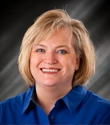Jun 12, 2019
Life 'til the End: Hospice in Rural America
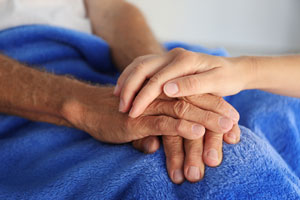 Carol Anderson's father only moved into Assisted
Living to be with her mother who was ill. In an
unforeseen turn of events, her father's Parkinson's
worsened and he found his health failing much more
quickly than his wife's. In time, a move to a long-term
care facility was necessary and the family found
themselves working to make sure he had excellent care and
support as he faced a terminal prognosis. Anderson, of
rural Iowa, and her siblings enlisted the local hospice
to assist them in their journey.
Carol Anderson's father only moved into Assisted
Living to be with her mother who was ill. In an
unforeseen turn of events, her father's Parkinson's
worsened and he found his health failing much more
quickly than his wife's. In time, a move to a long-term
care facility was necessary and the family found
themselves working to make sure he had excellent care and
support as he faced a terminal prognosis. Anderson, of
rural Iowa, and her siblings enlisted the local hospice
to assist them in their journey.
Having farmed his whole life, even as his body failed, their father still had a sharp mind, and Anderson appreciated the extra visits and support that hospice provided in partnership with the nursing facility. “The extra care and grooming allowed him to maintain his dignity. Even when he was very ill, he knew what was going on and that made him feel better.”
For people like Anderson, who was helping both her parents and an elderly aunt make decisions about their care and working full-time, hospice can provide vital support and help with the weight of the end-of-life journey.
Rural hospice services can allow families and caregivers to participate in their loved one's care but also get critical breaks and support in order to help them meet their own needs.
Anderson's sister Annie acknowledged the education and support the family received throughout their journey. “One thing I appreciated was the support from the very first step. Important pieces such as facilitating the family's discussion with Dad and hospice staff clarifying Dad's wishes regarding limitation or discontinuation of medical intervention or what his various options would 'look like,' and how we could support him and honor his wishes.”
She added, “Those things are hard to talk about, for us, and even more so for Dad, as the quiet, private person he was. I appreciated the education on things that helped us understand changes seen over time and even the various emotions and reactions we experienced. And I appreciated how staff understood the fact that Mom and Dad's generation was not one to talk about emotions…and they knew when to just let them remain private in their thoughts and emotion and when to gently and sensitively draw them out a bit, to support them (and us).”
The Roots of Hospice
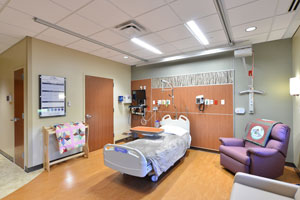
Started in Great Britain by Dame Cicely Saunders in the late 1960s and brought to the United States as a concept in the latter part of the next decade, hospice care is designed to support patients and families with all of their medical, spiritual, and psychosocial needs. Hospice recognizes that physical pain is not the only kind of pain that patients feel and that grief support, starting before the patient has passed away, is a vital link in allowing families to find peace and healing when dealing with the death of a loved one. In the United States, Congress created a Medicare hospice benefit in the Tax Equity and Fiscal Responsibility Act of 1982. In 1986, the benefit was made permanent. While a Medicare benefit, hospice is also available to patients who have Medicaid and private insurance.
Many people think that hospice is only for patients who are very near death, but studies show that the earlier a patient with a terminal diagnosis can start receiving hospice service the better they can be served. A 2017 study of rural hospice care by the South Carolina Rural Research Center found that hospice care helped patients avoid hospitalizations and ER visits at the end of life.
One way hospice assists with avoiding unnecessary hospitalizations and trips to the ER is by providing a nurse case manager who takes over the coordination of care for the patient and works with an interdisciplinary team comprising physicians, nurses, social workers, chaplains, and health aides who collaborate with the patient and family in order to provide the individual the most peaceful, pain-free, and fulfilling end of life. The care is patient-centered and revolves around the patient and family needs.
Hospice actually provides an opportunity for the patient and family to focus on the important areas of the patient's life rather than simply fighting the illness.
Erika Eckley, the Executive Director of the Hospice and Palliative Care Association of Iowa (HPCAI), explained, “Hospice actually provides an opportunity for the patient and family to focus on the important areas of the patient's life rather than simply fighting the illness. Providing palliative and coordinated care to the patient can enhance quality of life measures and support for the family. The patient's pain and anxiety are often better managed and, combined with the support of the hospice team, the caregivers can also find reduced anxiety and peace of mind.”
Anderson summed up her family's journey with hospice, “Our whole family was treated with kindness and respect. We feel very fortunate and are so grateful to have had hospice care available in our time of need.”
Grief Support
In addition to providing end-of-life care, hospices care for the bereavement needs of families before and after a death. This provides emotional support for healing and assists with the grieving process. Many hospices will operate grief support groups and send information periodically on dealing with different aspects of grief. Often the hospice will send cards or remember special days, such as anniversaries or birthdays.
“Mom also really appreciated the hospice staff's follow-up visits. I don't know how often they visited,” said Anderson's sister Emily, “but it helped her with closure, knowing they cared about the whole family as much as they cared for Dad. We also cherished the little things they do after the death, like the ornaments, services, and cards. They understand that grieving isn't over after the funeral and families take comfort that their loved ones are remembered.”
Her sister Marilyn agreed, “The follow-up Christmas ornaments, cards, and talks with Mom were so important.”
Hospice in Rural America
In the most recent data available from 2017, there were about 878 rural hospices, about 20% of all hospices in the United States, according to a 2019 Report to Congress: Medicare Payment Policy. Although the number of rural hospices in the country has decreased in recent years, the report also states that the percentage of rural Medicare beneficiaries who used hospice services prior to their deaths has increased.
Not unlike other rural providers, rural hospices struggle to achieve the volumes that will allow them to provide services. A study of hospice leaders in March 2015 by the Rural Health Reform Policy Research Center identified finances, rural factors, and regulation at the top of their list of issues.
In addition, the reimbursement methodologies of hospices and other rural providers, such as Critical Access Hospitals (CAHs), Rural Health Clinics (RHCs), and Federally Qualified Health Centers (FQHCs), may not be aligned. However, these organizations and hospices are finding ways to work with one another, because they are largely community-based and trying to serve the needs of the community.
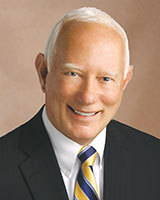
According to a 2017 findings brief from the North Carolina Rural Health Research Program, at least 131 CAHs reported some revenue from hospice on their Medicare Cost Report. And recently introduced legislation in Congress may make it easier for physicians in RHCs and FQHCs to provide care for their hospice patients.
Bill Sexton is the CEO of Crossing Rivers Health in Prairie du Chien, Wisconsin, a community health center and CAH that has operated a hospice for more than 40 years. He acknowledged that there are difficulties in operating a rural hospice but stated that it was part of their organization's mission to “bridge the life span from birth to the last dying breath.” Sexton explained that his organization provides hospice care for families as a service to the community and that they were only able to support the community in that way because of the incredible community support for hospice and the medical center.
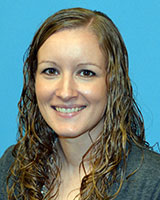
Amanda Schultz, Director of Care Coordination at Crossing Rivers Health, echoed that sentiment, “I wouldn't want to be part of a hospice that wasn't part of a CAH. The support and relationship with the hospital is crucial.” In her role, Schultz manages transitions in care between primary, acute, and post-acute care to help the patient achieve the best possible outcome. Schultz commented that while collaborating with the hospice might not prevent the first hospital readmission, it can often prevent a second or third. “Often we can catch people in need of referral during that readmission and help them connect with the hospice when they are ready.”
Sexton also commented that, as the only not-for-profit hospice in that area, Crossing Rivers Health sees referrals from outlying areas and welcomes them. The hospital has even created a hospice suite with an adjacent family area to provide for inpatient hospice stays.
Crossing Rivers Health provides some therapy staff to the hospice, but the hospice maintains its own nursing and care staff and hasn't experienced some of the staffing shortages of other rural hospices. Grief support is an important part of avoiding hospice staff burnout and staffing shortages, according to Sexton. “Hospice is a special calling. For those who are called to it, in a way it's fulfilling, but leadership needs to provide staff support.”
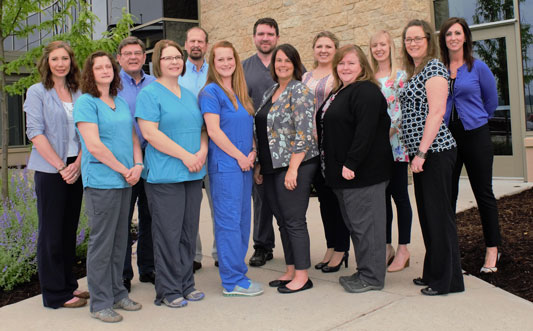
In its own way, hospice is a calling for Crossing Rivers Health as well. Despite the challenges and pressures of providing rural hospice, Sexton is adamant that it's the right thing to do.
Hospice is not a business decision for us. The patients we are caring for, we are bringing home, improving their quality at the end of life, and allowing them to be part of the community and receive those last visits from friends and family.
“Hospice is not a business decision for us,” said Sexton. “The patients we are caring for, we are bringing home, improving their quality at the end of life, and allowing them to be part of the community and receive those last visits from friends and family.”
For Anderson's sister Marilyn, those last visits were one of the most meaningful parts of her Dad's hospice care in Iowa.
“On a Friday afternoon, I had a text from my sister Carol that said it was looking like Dad was in his final days. The next morning, I was in Iowa where my parents and siblings live. This was the beginning of three very precious days of time with Dad, and all of us together before and after his passing.” She continued, “The hospice staff was in close touch with Carol, and it was so comforting and helpful to have them with us. They explained what they were doing to make Dad more comfortable, as we saw signs of changes happening to him. I read the booklet that they gave us and prayed with a chaplain that came in to be with us. On Sunday, Mom and all my siblings, spouses, and I joined hands around Dad's bed and said the 'Our Father.' We talked to Dad individually, held his hands, talked with Mom, loved each word that Dad managed to say. And as Mom and Dad would have wanted, the hospice staff made sure there were fresh drinks and food there all the time. I will always be thankful that skilled, loving people helped me know when to come home and how to make the most of each moment that was left with Dad.”

